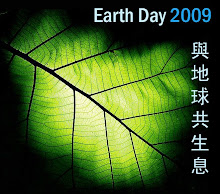
Shortly after 9 p.m. tonight, a contact group of the AWG-KP—that’s Ad Hoc Working Group on Further Commitments for Annex I Parties under the Kyoto Protocol—gathered in the Hans Christian Andersen meeting room. (As Prof. Schneider explained it, a contact group is formed when there’s a sticking point during the plenary, the main negotiating sessions, a particular issue that needs to be hashed out or clarified. Then all the interested countries dispatch representatives to work on crafting an understanding on that point, while the rest of the plenary moves on and discusses other issues on the agenda.)
In our case, the representatives were there to discuss the emissions reductions that each country in Annex I of the Kyoto Protocol would be willing to commit to, and then determine what those emissions reductions would add up to in aggregate.
Sounds like a sexy topic, right? You’d expect fireworks and grand-standing and denunciations as the debate heated up over who should commit and why and how much. Well, the session wasn’t the verbal sparring match we anticipated. For a couple of hours, we mostly stared at a projection of a table:
The two columns read:
- Quantified emissions limitation or reduction commitment (2008-2012) (percentage of base year)
- Quantified emission limitation or reduction commitment ([2013-2017][2013-2020]) percentage of base year or period
The brackets indicate that content inside the [ ] is up for discussion. The contact group got underway, with various delegations making statements under the Powerpoint glow.
Micronesia: It might be best to leave this. We are straying quite far from where we hope to be. (Editor's note: She sounds like Vienna Teng … lyrical, musical voice) (Muzicon)
Chinese delegate: I doubt whether we are making progress and question if we should be here at this late hour, if all we are doing is repeating these old lines (Muzicon)
Since the discussion did not seem to be getting anywhere, the chair suggested that meeting in a “smaller group” as opposed to the wider “contact group” to try to work through some of the issues. She then fielded responses to this proposal. The session then spent the next hour discussing how to proceed (as opposed to the substance of the agenda.)
The process of diplomacy is sometimes … well, I’d venture *often* ... like this. It seems a hard to be a diplomat, especially when you’re dealing with minute details that will wear down your teeth. (Or in this case, deciding what exact procedure would be appropriate for you to begin wearing down your teeth).
My friend Eric Yang Yi pointed out that this kind of working session is very much like 苦功 hard work, hard labor. The participants basically sit there, and go line by line, nitpicking the text, the exact phrasing of each line, mostly contesting the particular language in the document, though in some cases also raising points of principle, Phrasing probably has legal and political rammifications, which is why they do it, and it's important work. (However, it seemed like a lot of these caveats and clarifications imported long-standing arguments to the discussion, which is why some delegates felt like things were moving backwards). The verb Eric used in Chinese to describe the process is 磨, meaning "to grind." It’s exactly like that: a wheelstone grinding against rocks, until the final product is polished—or at least in close enough shape to pass back to the larger plenary.
In fact, when we left, the contact group was still going, though delegates were visibly wilting, and some were showing their frustration. Cearly, they were very dedicated people, and as the Chinese delegation put it: "We're willing to stay here all night, if we are making progress toward an agreement." But many of them felt that they were simply spinning wheels without getting "the numbers" down.
I would have stayed longer to catch the end of the tale, but I didn't want to miss the last Metro out of Bella Center. I was afraid there wouldn’t be any trains after midnight.
(This entry is an impression of the proceedings of an AG-KWP contact group that took place on the evening of December 14, 2009 at the Fifteenth Conference of the Parties in Copenhagen, Denmark. While descriptions are faithful to what was observed from 9-11:50 p.m. from a particular individual's vantage point, the author makes no claims of its accuracy as a reflection of the COP process or of AG-KWP contact groups in general. The author takes no responsibility for the reaction of readers or their actions subsequent to reading this blog.)
Eric surreptiously having his photo taken with Yu Qingtai, one of the Chinese negotiators.

The Belarussian delegate checks her e-mail while the contact group softly hums in the background.


eric said he'll be mad if this pic is not taken off NOW.
ReplyDelete